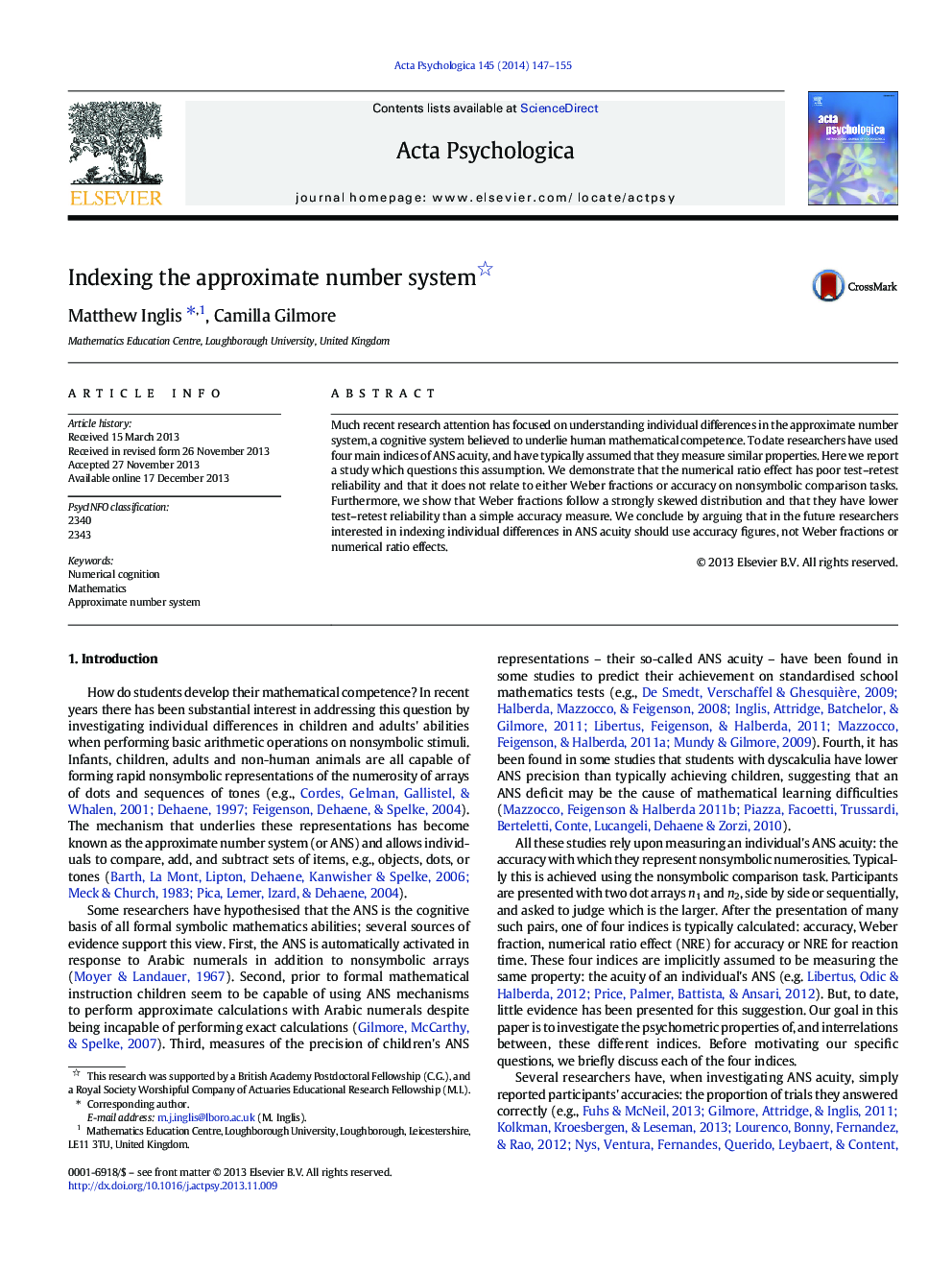| Article ID | Journal | Published Year | Pages | File Type |
|---|---|---|---|---|
| 919855 | Acta Psychologica | 2014 | 9 Pages |
•The ANS is a cognitive system believed to underlie mathematical competence.•Researchers have typically used four different indices to measure ANS acuity.•We investigated the four indices' distributions, inter-relations and reliabilities.•We argue that, in the future, researchers should use accuracy to index the ANS.
Much recent research attention has focused on understanding individual differences in the approximate number system, a cognitive system believed to underlie human mathematical competence. To date researchers have used four main indices of ANS acuity, and have typically assumed that they measure similar properties. Here we report a study which questions this assumption. We demonstrate that the numerical ratio effect has poor test–retest reliability and that it does not relate to either Weber fractions or accuracy on nonsymbolic comparison tasks. Furthermore, we show that Weber fractions follow a strongly skewed distribution and that they have lower test–retest reliability than a simple accuracy measure. We conclude by arguing that in the future researchers interested in indexing individual differences in ANS acuity should use accuracy figures, not Weber fractions or numerical ratio effects.
